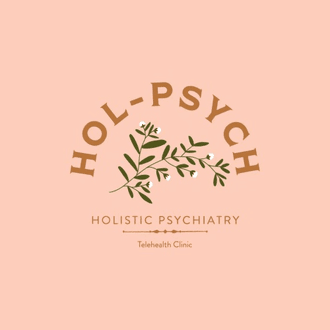
The world of healthcare has evolved significantly in recent years, with advancements in technology offering new ways to access care. One of the most notable developments in mental health services is the rise of psychiatric telehealth, providing patients with the option to receive care from the comfort of their own home. However, psychiatric telehealth isn’t the only option available—traditional in-person care remains the gold standard for many patients. So, how do you decide which option is right for you?
In this blog post, we’ll explore the pros and cons of psychiatric telehealth and in-person care to help you make an informed choice based on your individual needs, preferences, and circumstances.
Understanding Psychiatric Telehealth
Psychiatric telehealth refers to the delivery of mental health services via online platforms, using video calls, phone consultations, and secure messaging systems. This form of telehealth allows patients to consult with psychiatrists, psychologists, and therapists remotely, without the need to visit a clinic or office in person.
- How it works: Patients book appointments online and meet with their mental health professional through secure video calls or over the phone. Sessions can involve therapy, medication management, assessments, and more.
- Types of services offered: Psychiatric telehealth services can include ongoing psychiatric care, once-off assessments, psychology sessions, and even Group DBT Therapy. For veterans, DVA reports are also available via telehealth consultations.
Pros of Psychiatric Telehealth
1. Convenience and Accessibility
One of the biggest advantages of psychiatric telehealth is the convenience it offers. Patients can access mental health care from the comfort of their home, eliminating the need to commute or take time off work. This is especially helpful for individuals with mobility issues, those living in remote areas, or those with busy schedules.
- Flexibility: You can schedule your appointments at times that suit you, without worrying about travel time or availability of appointments.
- Access to a broader range of professionals: Telehealth allows you to connect with mental health professionals who may not be available in your local area, expanding your options.
2. Comfort and Privacy
For some individuals, visiting a healthcare facility can feel intimidating or uncomfortable. Psychiatric telehealth offers a more private and comfortable setting for discussing sensitive mental health issues. You can choose your environment, whether it’s your home or another location where you feel at ease.
- Less stigma: For people who are hesitant to seek help due to the stigma associated with mental health, psychiatric telehealth provides a more discreet way to access care.
- Comfortable setting: Being in your own home allows you to feel more relaxed and open during consultations.
3. Cost-Effectiveness
Psychiatric telehealth can often be more affordable than in-person care, especially when considering the travel costs, parking, and time off work required for attending face-to-face appointments. Additionally, some telehealth services may be covered by health insurance, reducing the overall cost.
Cons of Psychiatric Telehealth
1. Limited Personal Interaction
While telehealth is convenient, it lacks the face-to-face connection that some patients find important in building a therapeutic relationship. Non-verbal cues, such as body language and facial expressions, can be harder to read in a virtual setting, potentially leading to communication barriers.
- Less rapport building: For some patients, the personal interaction of in-person care helps build trust and rapport with the mental health professional.
- Technology challenges: Some patients may face technical issues, such as poor internet connections or difficulty using telehealth platforms.
2. Not Suitable for All Conditions
While psychiatric telehealth can be an effective solution for many individuals, it may not be appropriate for everyone. Those with more severe mental health conditions may require more intensive, in-person care, particularly if they need immediate intervention or supervision.
- Emergency situations: In-person care is better suited for patients requiring emergency interventions, physical assessments, or more intensive care.
3. Limited Hands-On Services
Certain mental health treatments, such as hands-on assessments, are better suited to in-person settings. While telehealth can provide excellent therapy and medication management, it cannot replace the physical presence required for some therapies.
The Case for In-Person Care
1. Personalised and Direct Interaction
In-person care offers the benefit of face-to-face interaction, allowing for a more personal and engaging experience. For many patients, the physical presence of their mental health professional is key to feeling heard and understood.
- Non-verbal communication: A therapist or psychiatrist can pick up on subtle non-verbal cues, such as posture and facial expressions, which are crucial in understanding the full scope of a patient’s emotions and struggles.
2. Comprehensive Assessment and Treatment
In-person visits allow for more comprehensive assessments. Psychiatric care can involve physical examinations, blood tests, and other assessments that may not be possible during a telehealth consultation.
- Holistic approach: Physical health and mental health are interconnected. In-person visits allow professionals to assess the whole picture, ensuring a more effective treatment plan.
3. More Suitable for Severe Conditions
For those dealing with severe mental health conditions, in-person care may be the best option. This includes individuals who require intensive therapy, ongoing psychiatric care, or face-to-face group therapy sessions like Group DBT Therapy.
- Immediate intervention: In cases of crisis or severe symptoms, being physically present with a healthcare provider ensures immediate intervention and supervision.
Making the Choice: Which Option Is Right for You?
When it comes to choosing between psychiatric telehealth and in-person care, it ultimately depends on your personal preferences, mental health needs, and lifestyle. Here are some key factors to consider when making your decision:
Your Needs
If you have a chronic condition that requires ongoing monitoring and regular check-ins, psychiatric telehealth may be more convenient and cost-effective. However, if you are dealing with more severe symptoms, in-person care may provide more comprehensive and immediate support.
Comfort and Convenience
If you are looking for convenience, flexibility, and privacy, psychiatric telehealth is a great option. However, if building a strong therapeutic relationship is important to you, in-person care may be more beneficial.
Insurance and Costs
Check with your insurance provider to see if telehealth services are covered under your plan. While psychiatric telehealth is often more affordable, it’s important to ensure that the service you choose fits within your budget.
Making an Informed Choice Between Psychiatric Telehealth and In-Person Care
Choosing between psychiatric telehealth and in-person care comes down to your individual needs and preferences. Both options offer unique benefits, and the right choice will depend on your specific circumstances. For many, a combination of both may be the best approach, with psychiatric telehealth offering flexibility and convenience, while in-person care provides the hands-on support needed for more complex conditions.
At Hol-Psych, we offer a wide range of services, including ongoing psychiatric care, group therapy, and once-off assessments. Visit our services page to learn more about how we can support you, or contact us to schedule a consultation.




